Essential Hawaii Vacation Planning Checklist for 2025
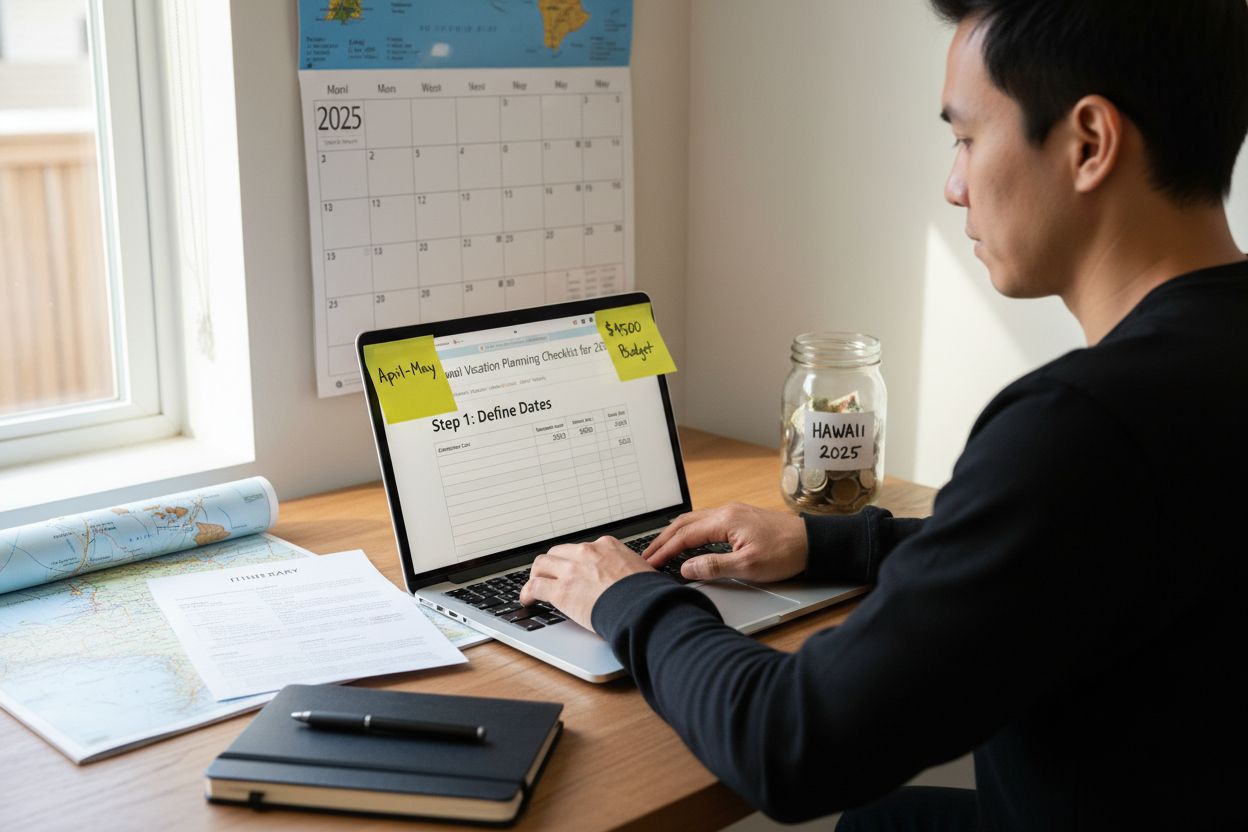
Figuring out the perfect Hawaii vacation can feel overwhelming when every choice seems to have hidden costs and complications. Yet the real shock is how much your trip can change based on when you visit and how you plan. The average week-long trip to Hawaii can range from $2,500 to $5,000 per person yet a few savvy moves can save you hundreds and open the door to experiences most travelers miss entirely.
Table of Contents
- Step 1: Define Your Travel Dates And Budget
- Step 2: Research Ideal Destinations And Activities
- Step 3: Book Flights And Accommodations
- Step 4: Plan Transportation And Local Experiences
- Step 5: Prepare Essential Documents And Packing List
Quick Summary
| Key Point | Explanation |
|---|---|
| 1. Define travel dates and budget early | Establish travel dates and a comprehensive budget to guide your planning and ensure a smooth trip. |
| 2. Research destinations and activities thoroughly | Explore the six main Hawaiian islands to align your travel goals with suitable experiences and attractions. |
| 3. Book flights and accommodations strategically | Secure your travel arrangements well in advance, considering peak seasons and package deals for savings. |
| 4. Plan transportation and local experiences | Decide on vehicle rentals and local activities to enhance your exploration and cultural engagement during the trip. |
| 5. Prepare essential documents and packing wisely | Organize important travel documentation and pack versatile clothing and essentials to accommodate Hawaii’s diverse climates. |
Step 1: Define Your Travel Dates and Budget
Planning a memorable Hawaii vacation begins with strategic timing and financial preparation. Understanding your travel dates and budget will shape every subsequent decision in your hawaii vacation planning checklist, ensuring a smooth and enjoyable experience.
When to Travel: Hawaii offers year-round beauty, but certain seasons dramatically impact your travel experience and expenses. According to Hawaii Tourism Authority, peak tourist seasons occur during winter (mid-December through March) and summer (June through August). These periods feature higher accommodation rates and more crowded attractions. For budget-conscious travelers, consider visiting during shoulder seasons like April-May or September-November, when prices decrease and crowds thin out.
Budget considerations extend far beyond simple airfare and lodging. Smart travelers allocate funds across multiple categories to prevent financial surprises. A comprehensive budget typically includes:
- Accommodation costs
- Flight expenses
- Inter-island transportation
- Food and dining
- Activity and tour fees
- Travel insurance
- Emergency funds
Calculating your total budget requires careful research and realistic expectations. Most travelers find that a week-long Hawaii vacation can range from $2,500 to $5,000 per person, depending on travel style. Budget travelers might spend closer to $150-250 daily, while luxury experiences could exceed $500 daily.
Budget Planning Tools: Leverage digital resources to streamline your financial planning. Websites like Kayak and Skyscanner offer price comparison tools that help track flight and accommodation costs. Create a spreadsheet tracking potential expenses, allowing flexibility for unexpected costs. Consider setting up a dedicated travel savings account months before your trip to gradually accumulate funds without financial strain.
Proactive travelers also monitor airline promotions and travel deal websites. Many airlines offer discounted rates during off-peak seasons, and booking 3-6 months in advance often yields significant savings. Flexibility with travel dates can result in hundreds of dollars saved, making your hawaii vacation planning checklist more economically sound.
Verify your budget and travel dates by creating a detailed itinerary that accounts for all anticipated expenses. Your goal is a comprehensive plan that balances financial prudence with exciting Hawaiian experiences, setting the stage for an unforgettable island adventure.
Step 2: Research Ideal Destinations and Activities
Navigating the Hawaiian islands requires thoughtful research to transform your vacation from ordinary to extraordinary. Your hawaii vacation planning checklist now enters a crucial phase: selecting destinations and activities that align perfectly with your interests and travel goals.
Hawaii comprises six primary visitor islands, each offering distinct experiences. Oahu pulses with urban energy and historical significance, home to Honolulu and Pearl Harbor. Maui presents breathtaking landscapes and world-renowned beaches. Hawaii Island (the Big Island) showcases active volcanoes and diverse ecological zones. Kauai attracts nature lovers with its lush landscapes and dramatic coastlines. Lanai and Molokai provide more secluded, authentic island experiences.
According to the Hawaii Tourism Authority, travelers should consider their personal preferences when selecting destinations. Adventure seekers might gravitate toward Big Island’s volcanic terrain, while those seeking relaxation could prefer Maui’s resort areas. Cultural enthusiasts will find Oahu’s historic sites particularly compelling.
Research strategies involve multiple approaches. Start by exploring official tourism websites, which offer comprehensive destination guides. YouTube travel channels and Instagram geotags provide visual insights into potential experiences. Travel forums like TripAdvisor allow direct interaction with recent visitors who share unfiltered perspectives.
Critical activities to research include:
- Beach and water experiences (snorkeling, surfing)
- Cultural sites and museums
- Hiking and nature trails
- Local festivals and events
- Culinary experiences
- Historical landmarks
Budget plays a significant role in destination selection. Some islands offer more economical experiences than others. Mainland flight costs, inter-island transportation, and accommodation prices vary substantially. Create a preliminary spreadsheet comparing estimated expenses for each potential destination.
Travel timing impacts activity availability. Hawaii’s seasonal variations influence everything from whale watching to hiking conditions. Summer months offer calmer ocean conditions, while winter brings larger waves ideal for experienced surfers. Research local event calendars to potentially align your visit with unique cultural celebrations.
Verify your destination research by creating a detailed itinerary draft. Your checklist should include potential daily activities, estimated costs, and backup options. A well-researched plan transforms your hawaii vacation from a generic trip to a personalized adventure tailored precisely to your interests and expectations.
To help you compare the unique features and highlights of each major Hawaiian island, refer to the table below for guidance on selecting the destination that best matches your travel preferences.
| Island | Main Highlights | Ideal For | Notable Activities |
|---|---|---|---|
| Oahu | Urban energy, historical sites | Culture seekers | Pearl Harbor, Waikiki, museums |
| Maui | Scenic beaches, lush landscapes | Relaxation, families | Road to Hana, whale watching |
| Hawaii Island | Volcanic terrain, diverse climates | Adventure travelers | Volcanoes National Park, snorkeling |
| Kauai | Dramatic coastlines, natural beauty | Nature lovers | Na Pali Coast, hiking |
| Lanai | Secluded resorts, rugged terrain | Luxury, solitude | Off-road tours, quiet beaches |
| Molokai | Authentic Hawaiian culture, tranquility | Culture and history buffs | Local festivals, historical sites |
Step 3: Book Flights and Accommodations
With your destination research complete, the next critical phase of your hawaii vacation planning checklist involves securing flights and accommodations. This step transforms your travel dreams into a concrete itinerary, requiring strategic decision-making and careful financial planning.
Flight Booking Strategies: Timing is everything when purchasing airline tickets to Hawaii. Most mainland US travelers find the most competitive rates by booking 2-3 months in advance. Midweek flights typically offer lower prices compared to weekend departures. Use flight comparison websites like Kayak, Skyscanner, and Google Flights to track price fluctuations and set up fare alerts.
According to the CDC, travelers should review current health guidelines and entry requirements before finalizing their travel plans. This proactive approach prevents potential last-minute complications that could disrupt your carefully planned vacation.
Consider multi-island itineraries that might require inter-island flights. Hawaiian Airlines and Southwest offer competitive rates for island-hopping, but booking these connections simultaneously can often reduce overall transportation costs. Some travelers opt for package deals that bundle flights and accommodations, potentially generating significant savings.
Accommodation selection requires equally meticulous research. Hawaii offers diverse lodging options ranging from luxury resorts to budget-friendly vacation rentals. Location matters significantly when choosing where to stay. Beachfront properties provide immediate ocean access but come at a premium, while accommodations slightly inland offer more economical rates without sacrificing proximity to attractions.
Critical factors to evaluate when selecting accommodations include:
- Proximity to planned activities
- Parking availability
- Kitchen facilities
- Wi-Fi accessibility
- Cancellation policies
- Reviews from recent travelers
Budget-conscious travelers should explore alternative lodging options like vacation rentals, which often provide more space and kitchen facilities compared to traditional hotel rooms. Websites like Airbnb and VRBO feature extensive Hawaiian property listings, allowing detailed filtering based on amenities, location, and price.
Booking during shoulder seasons can dramatically reduce accommodation costs. September through November and April through May typically offer lower rates and fewer crowds. Some properties offer significant discounts for extended stays, so consider negotiating rates or searching for weekly rental specials.
Verify your bookings by creating a comprehensive travel folder containing all confirmation emails, reservation details, and contact information. Double-check flight times, accommodation check-in procedures, and any specific entry requirements. Your meticulous preparation ensures a smooth, stress-free Hawaiian adventure that maximizes both enjoyment and value.
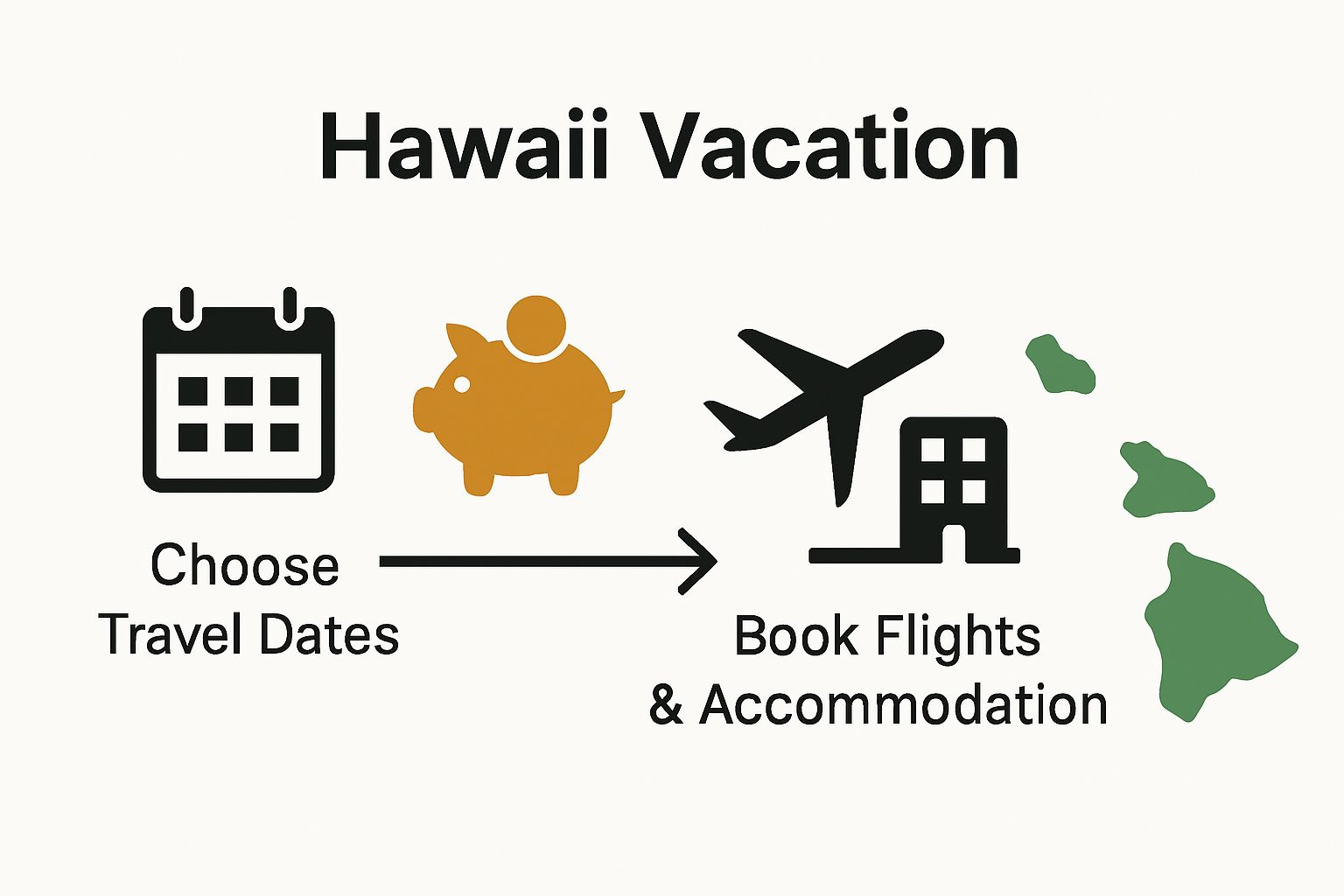
Step 4: Plan Transportation and Local Experiences
Successful Hawaiian travel extends beyond booking flights and accommodations. Your hawaii vacation planning checklist now focuses on navigating the islands and immersing yourself in authentic local experiences. Transportation and activity planning will determine the flexibility and richness of your island adventure.
Vehicle Rental Considerations: Renting a car offers the most comprehensive island exploration, especially on larger islands like Maui and Hawaii Island. Rental prices fluctuate based on season, with peak tourism periods commanding higher rates. Book vehicles in advance to secure better pricing and guarantee availability. Compare rates across multiple rental agencies, considering factors like insurance coverage, mileage limitations, and additional fees.
According to Hawaii Tourism Authority, travelers have multiple transportation options beyond personal vehicle rentals. Public transportation systems vary significantly between islands. Oahu’s comprehensive bus network provides affordable urban and suburban routes, while smaller islands might offer more limited transit options.
Budget-conscious travelers should investigate multi-day transit passes and shuttle services. Many hotels offer complimentary airport transfers, and some tour companies include transportation in their packages. Ride-sharing services like Uber and Lyft operate extensively in urban areas, providing convenient alternatives to traditional car rentals.
Local experiences require strategic planning to maximize enjoyment and cultural understanding. Research goes beyond simple internet searches. Engage with local tourism boards, follow regional social media accounts, and connect with travelers who have recently visited your specific island destination.
Key experiences to prioritize in your planning include:
- Traditional Hawaiian cultural demonstrations
- Local food and farmers markets
- Guided hiking tours
- Historical site visits
- Sunset and sunrise viewing locations
- Authentic luau experiences
Consider purchasing activity packages or multi-attraction passes, which often provide significant cost savings compared to individual ticket purchases. Many Hawaiian attractions offer online booking with advanced purchase discounts. Websites like Viator and GetYourGuide aggregate local experiences, allowing side-by-side comparisons of tours and activities.
Timing plays a crucial role in local experience planning. Some cultural demonstrations and natural phenomena occur at specific times or seasons. Volcanic national parks, whale-watching opportunities, and traditional festivals have unique scheduling considerations. Create a flexible itinerary that allows spontaneity while ensuring you don’t miss must-see attractions.
Verify your transportation and experience plans by creating a detailed daily schedule. Include backup options, contact information for tour providers, and potential alternative activities. A well-researched plan transforms your Hawaiian vacation from a generic trip to an immersive, memorable journey through one of the world’s most stunning destinations.
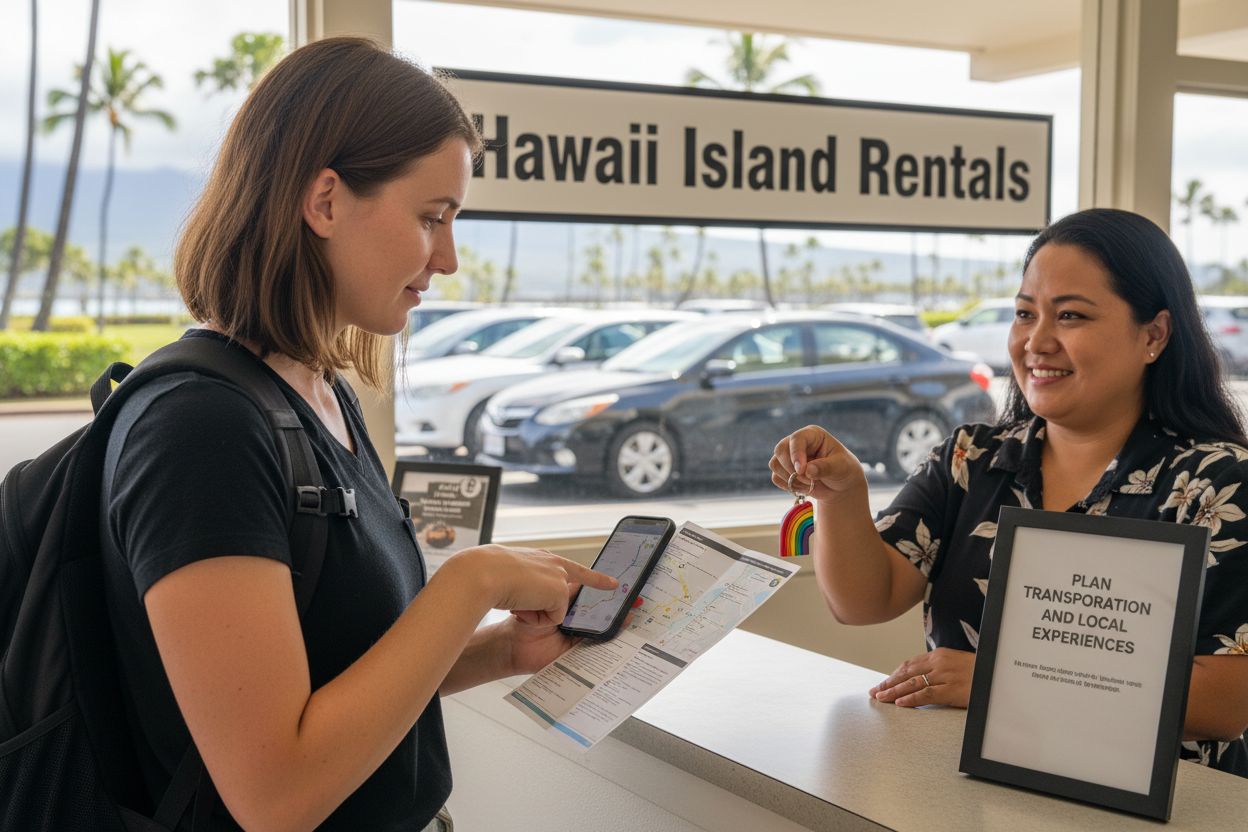
Step 5: Prepare Essential Documents and Packing List
As your hawaii vacation planning checklist nears completion, organizing documents and packing strategically becomes paramount. This critical step ensures a smooth, stress-free travel experience by preparing for every potential scenario while maintaining flexibility and comfort.
Travel Documentation: Compile a comprehensive travel folder containing essential paperwork. For domestic travelers, a government-issued photo ID suffices. International visitors require a valid passport with at least six months remaining before expiration. Make digital and physical copies of all important documents, storing them separately from originals. Consider uploading scanned copies to secure cloud storage as an additional backup strategy.
According to the CDC, travelers should also prepare comprehensive health documentation. While Hawaii doesn’t currently require specific vaccination records, carrying your medical insurance information and a list of current medications is recommended. Travelers with pre-existing conditions should consult their healthcare providers about potential travel considerations.
Packing for Hawaii requires thoughtful consideration of the diverse ecological zones and activities you might encounter. Unlike many destinations with uniform climates, Hawaii offers dramatically different environments within short distances. Coastal areas remain warm and humid, while higher elevation regions like Maui’s Haleakala can experience significantly cooler temperatures.
Your packing strategy should prioritize versatility and practicality. Lightweight, moisture-wicking clothing works best in Hawaii’s tropical climate. Quick-drying materials allow easy transition between beach activities and more formal dining experiences. Pack layers that can be easily added or removed, accommodating temperature variations.
Essential items for your Hawaiian adventure include:
- Reef-safe sunscreen
- Lightweight rain jacket
- Comfortable walking shoes
- Swimwear and quick-dry towel
- Hat and sunglasses
- Portable charger
- Reusable water bottle
Technology preparation requires careful planning. Confirm your mobile carrier’s international coverage or purchase local SIM cards. Many Hawaiian attractions offer limited connectivity, so download offline maps and translation apps beforehand. Bring universal adapters if traveling from outside the United States, though Hawaii uses standard US electrical outlets.
Financial preparation extends beyond packing. Notify your bank about travel dates to prevent potential card freezes. Carry a mix of payment methods, including credit cards with travel rewards, cash for small purchases, and a backup card stored separately from your primary wallet.
Verify your preparation by conducting a final document and packing review 48 hours before departure. Create a digital checklist, cross-referencing your planned activities with packed items. A well-prepared traveler transforms potential stress into anticipation, setting the stage for an unforgettable Hawaiian adventure.
The packing list below organizes the most important items to help ensure you are well-prepared for Hawaii’s diverse climates and activities during your trip.
| Item | Purpose | Tips/Notes |
|---|---|---|
| Reef-safe sunscreen | Sun protection, ocean-safe | Required by Hawaii regulations |
| Lightweight rain jacket | Weather changes, rain protection | Essential for higher elevations |
| Comfortable walking shoes | Hiking, outdoor activities | Prefer water-resistant types |
| Swimwear & quick-dry towel | Beach and pool use | Pack multiple sets |
| Hat and sunglasses | UV protection | Wide-brim hats recommended |
| Portable charger | Keeping devices powered | Useful for long excursions |
| Reusable water bottle | Stay hydrated, eco-friendly | Refill at accommodations |
Upgrade Your Hawaii Vacation With a One-of-a-Kind Aerial Adventure
Do you want your Hawaii vacation checklist to deliver more than just sightseeing and standard tours? The biggest challenge for many travelers is finding experiences beyond the ordinary. You have budgeted, researched hidden gems, and planned every activity, but truly unforgettable thrills are hard to secure. Many of the article’s tips focus on maximizing value and uncovering local culture. What if you could see Hawaii’s most stunning landscapes in a breathtaking way, capturing both adventure and authentic storytelling with your family or group?
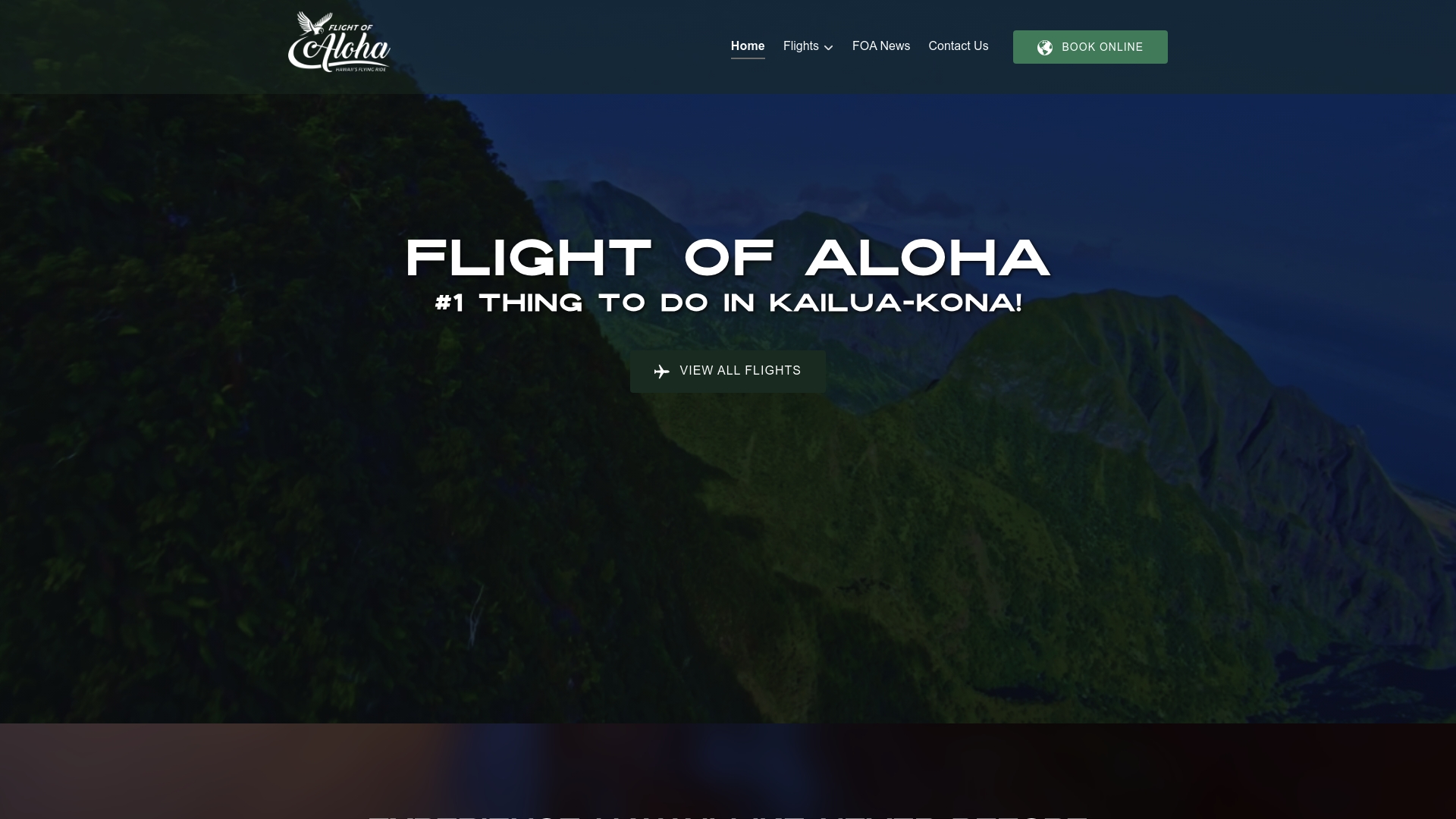
Experience Hawaii from an extraordinary perspective at Flight of Aloha. Our immersive flying theater lets you soar across the islands without ever leaving Kailua-Kona. Feel the rush of 8K visuals, real wind, scents, and motion effects. Dive into legendary journeys like “Naupaka” and “Lahaina” for a cultural adventure you cannot find anywhere else. Secure your spot now for a vacation highlight your checklist will thank you for. Ready for something you will remember long after the trip ends? Discover ride details and book your tickets online at Flight of Aloha.
Frequently Asked Questions
What are the best times to travel to Hawaii for the most affordable vacation?
Traveling to Hawaii during the shoulder seasons of April-May or September-November can help you find lower prices and fewer crowds. Aim to book your trip during these months to enjoy a more budget-friendly experience and avoid peak tourist traffic.
How can I create a budget for my Hawaii vacation?
Start by calculating your total expected costs, including flights, accommodations, food, activities, and unexpected expenses. Aim for a budget of $150-500 daily, depending on your travel style, and track your spending with a detailed spreadsheet.
What transportation options should I consider for getting around Hawaii?
Renting a car provides the most flexibility for exploring larger islands, while public transport is great for urban areas. Decide on your transportation method early, and book your rental car in advance to secure better pricing and availability.
How can I plan local experiences during my Hawaii vacation?
Research local activities in advance and prioritize experiences like guided tours, cultural festivals, and culinary events. Create a flexible daily itinerary that includes key attractions while allowing for spontaneous adventures.
What essential documents do I need for my Hawaii trip in 2025?
Ensure you have a valid government-issued photo ID or passport if you’re an international traveler, along with any necessary health documentation. Organize a travel folder with copies of these documents and store them separately for easy access.
What should I pack for my Hawaii vacation?
Pack lightweight, moisture-wicking clothing and include essentials like reef-safe sunscreen and comfortable walking shoes. Create a packing list to ensure you have everything you need for diverse activities and climates, especially for varying elevations on the islands.
Recommended
- Understanding 2025 Travel Trends In Hawaii | Flight Of Aloha
- 10 Must-See Experiences For Your Hawaii Travel Bucket List | Flight Of Aloha
- How To Prepare For Hawaii Attractions: A Complete Guide | Flight Of Aloha
- Kailua Kona Planning Checklist: Your Essential Adventure Base | Flight Of Aloha
- Essential Checklist for Extended RV Trips: Travel Smart | Horseshoe Ridge RV
